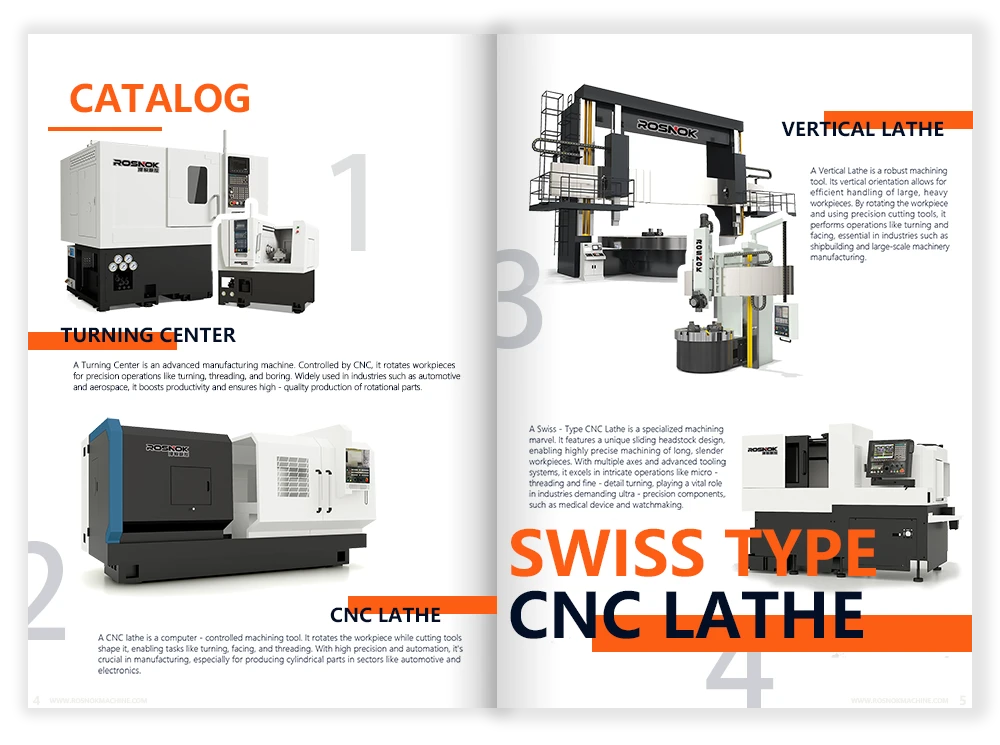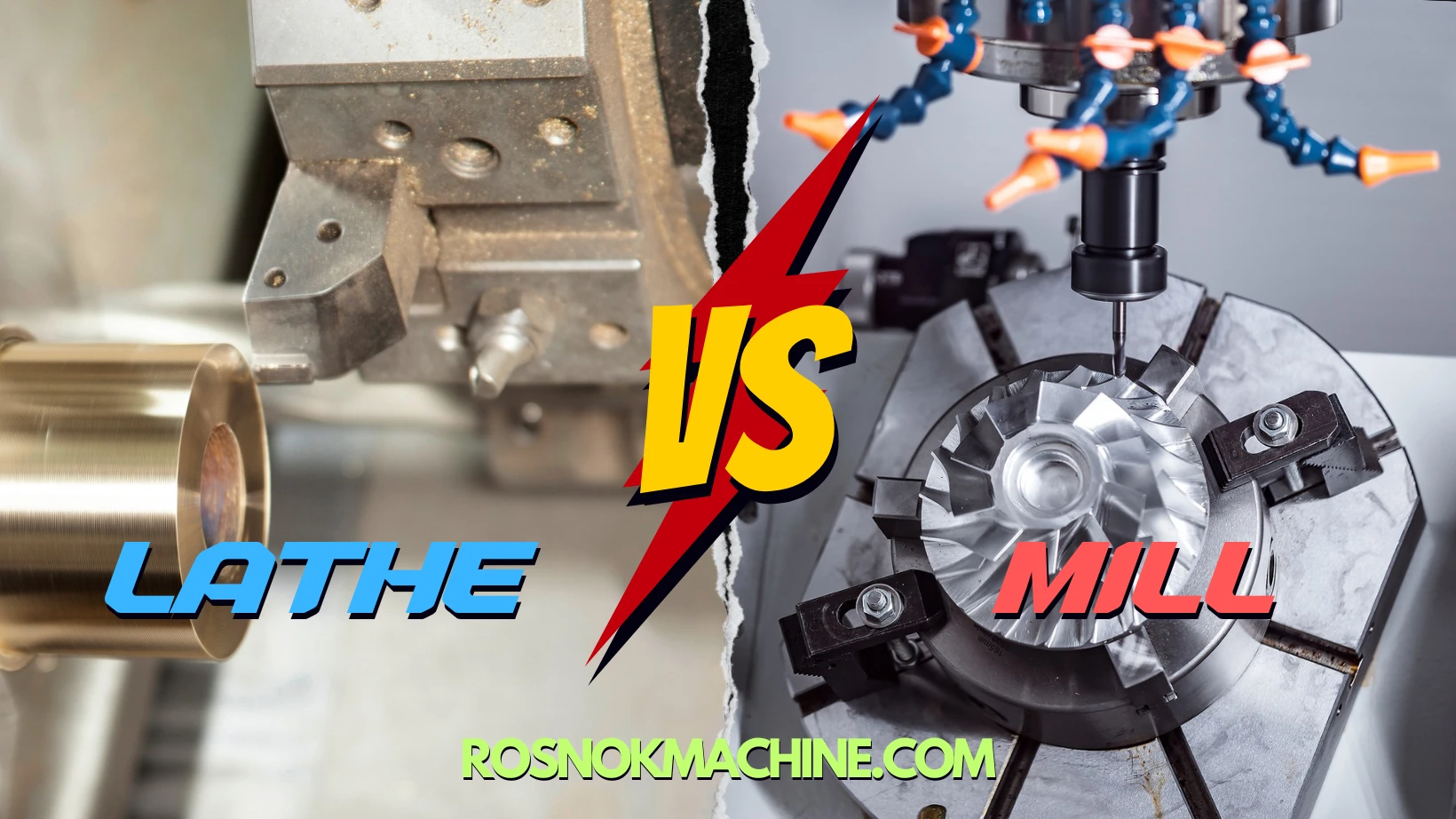Have you ever wondered what is a metal lathe and why it matters so much? Do you find yourself unsure what it actually does, or how it shapes raw metal into precision parts? Are you curious about its different types, where it’s used, or how to care for one properly?
A metal lathe is a machine tool used to shape metal by rotating the workpiece against a stationary cutting tool. Unlike other tools that move around the material, the lathe keeps the tool fixed while the metal spins at controlled speeds. This setup enables precise operations like turning, threading, and boring—ideal for creating round or symmetrical parts. With adjustable settings for spindle speed, feed rate, and depth of cut, it’s widely used for crafting accurate cylindrical components in metalworking and fabrication.
Continue reading to learn the key components, working principles, major types, real-world applications, and practical maintenance techniques of a metal lathe.
What Is a Metal Lathe?
A metal lathe is a fundamental machine tool used in shaping metal parts. It works by rotating a metal workpiece while a cutting tool stays fixed and removes material. This method is ideal for producing round or cylindrical shapes with precision. In simple terms, the lathe spins the metal, and the tool shapes it. This makes the machine essential for creating shafts, rods, bushings, threads, and other components that require accuracy and symmetry.
The basic structure of a metal lathe includes a headstock, tailstock, tool post, and bed. These components work together to hold the metal securely and control the cutting process. Whether it’s a manual model or a computer-controlled one, every type of metal lathe follows this same working principle.
Understanding what a metal lathe is helps clarify its role in metalworking. It’s not just another machine—it’s a core tool that supports everything from basic fabrication to advanced part manufacturing. While there are many types and uses, they all follow the same core function: shaping metal with control and consistency. This is why a clear metal lathe definition is often the first concept taught in machining courses.
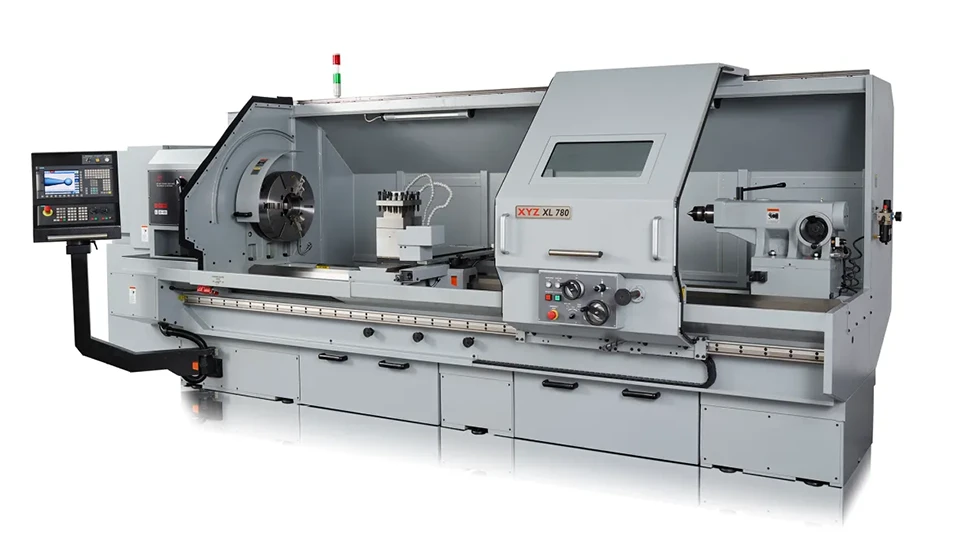
How Does a Metal Lathe Work?
To understand how a metal lathe works, think of a process where the metal spins, but the cutting tool stays still. A metal lathe rotates the workpiece while a fixed cutting tool gradually removes material to create a precise shape. This fundamental method is called turning, and it forms the basis of nearly every lathe operation.
The workpiece is clamped securely in a rotating spindle, usually with a chuck. As the spindle turns, the cutting tool—mounted on a carriage—moves along controlled paths to shape the surface. This “rotating part meets stationary cutter” setup allows for tight tolerances and symmetrical components. Compared to other tools, the lathe excels at cylindrical and round shapes, making it essential in both industrial and custom applications.
Whether it’s a simple shaft or a complex thread, the lathe handles each process with balance between motion and pressure. That’s what makes it so widely used—and so effective—in shaping metal. If you’re wondering what does a metal lathe do or what is a metal lathe used for, this is your answer: it turns raw metal into exact, functional parts with precision.
The Cutting Process Explained
The cutting process on a lathe starts with proper setup. First, the metal workpiece is loaded into the chuck or mounted between centers. Alignment and security are critical to avoid vibration. Next, the operator chooses a suitable cutting tool based on the job—whether for rough turning, fine finishing, or threading. The tool is mounted in the tool post and aligned correctly.
Once the machine is powered on, the spindle begins to spin the workpiece. At this point, the cutting tool is fed into the surface either manually or automatically. For external turning, the tool shapes the outer surface into a cylinder. For boring, it enters and enlarges an internal hole. Facing operations trim the end of the part flat. Each cut removes a thin layer of metal, often producing continuous metal shavings or chips.
These basic processes form the heart of metal lathe work. While they may appear simple, their precision depends heavily on setup, sharp tooling, and correct parameter settings.
Key Operating Parameters
Every quality cut on a metal lathe depends on three critical settings: spindle speed, feed rate, and depth of cut. These parameters must be balanced for the material and the desired outcome.
- Spindle speed (RPM): Controls how fast the workpiece spins. Too slow reduces productivity; too fast risks overheating or surface damage.
- Feed rate: The speed at which the tool advances. A slower feed creates a smoother finish; faster feeds remove material quicker but may leave rougher surfaces.
- Depth of cut: Refers to how deep the tool bites into the material per pass. Shallow cuts are safer and more precise; deeper cuts speed up work but increase tool wear.
Example: When machining mild steel, you might choose a spindle speed of 500 RPM, a feed rate of 0.1 mm/rev, and a depth of cut around 1 mm. For aluminum, higher speeds are possible; for hardened steel, you’ll need to slow down and reduce feed.
Knowing how to set and balance these values is key for achieving both surface quality and dimensional accuracy. It’s not just about cutting metal—it’s about cutting it right.
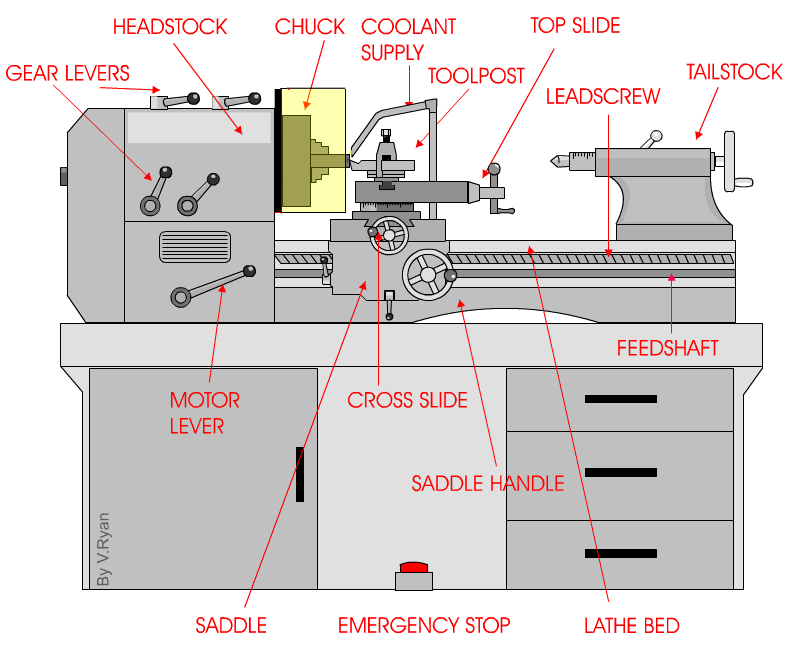
Key Components of a Metal Lathe
Understanding the structural layout of a metal lathe is essential to grasp how the machine achieves its precision. Unlike simpler tools, a metal lathe integrates multiple mechanical systems that must work in coordination—motion generation, tool guidance, workpiece support, and structural anchoring. Each part serves a specific role, not just in shaping metal but in maintaining accuracy, repeatability, and long-term stability during machining.
In the following sections, we’ll break down each major component individually—explaining not just what it is, but why it matters in practice. This clear understanding will help you connect the physical layout to real machining outcomes.
Bed
The bed is the foundational base of the machine, running the full length of the lathe. It ensures rigidity and alignment of the other components. High-quality beds are made of cast iron or polymer composites to dampen vibrations. The bed supports either hardened guideways (in traditional lathes) or linear rails (in CNC models), depending on the machine type. The precision and flatness of the bed are critical for maintaining dimensional accuracy over time.
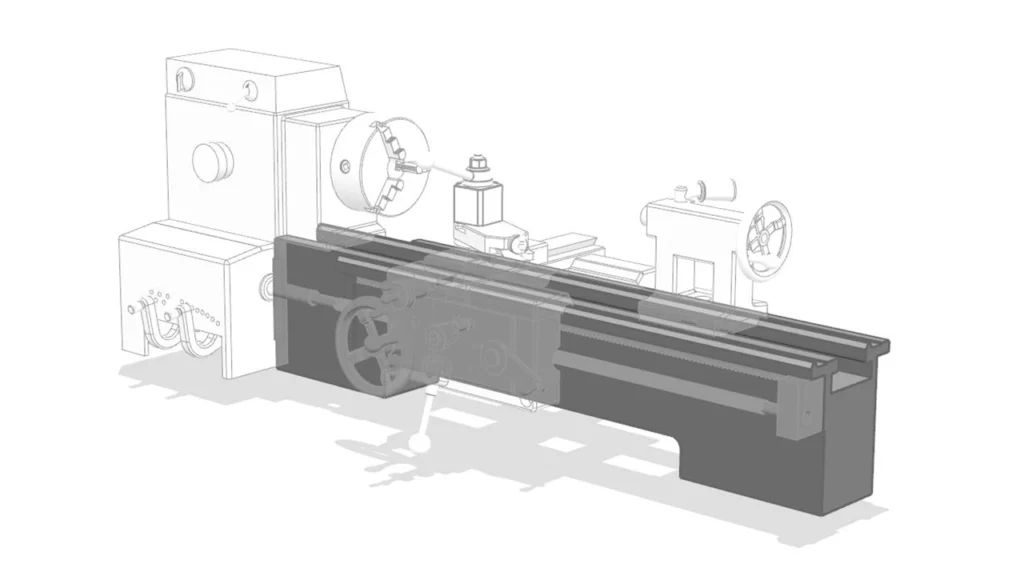
Headstock
The headstock is the heart of the lathe’s drive system. It houses the main spindle, speed control gears, and sometimes a gearbox. Its primary role is to rotate the workpiece by transmitting power from the motor to the spindle. The headstock defines the machine’s power output, torque range, and speed variability. In traditional engine lathes, it contains mechanical gear systems to change RPMs. In modern CNC lathes, this is often controlled electronically for greater precision and flexibility.
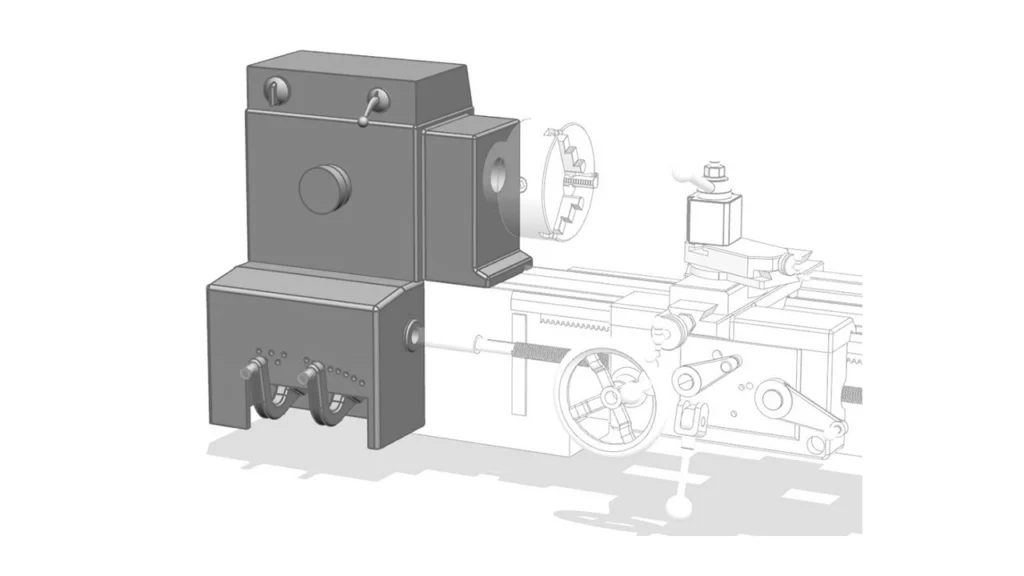
Spindle
The spindle is the rotating axis inside the headstock that drives and spins the workpiece. It connects to the chuck or other workholding devices, and its rotational accuracy (runout) directly impacts part quality. A well-balanced, high-rigidity spindle ensures consistent rotation under load, which is crucial for turning concentric components. Advanced spindles are often equipped with bearings that support high-speed cutting and thermal stability.
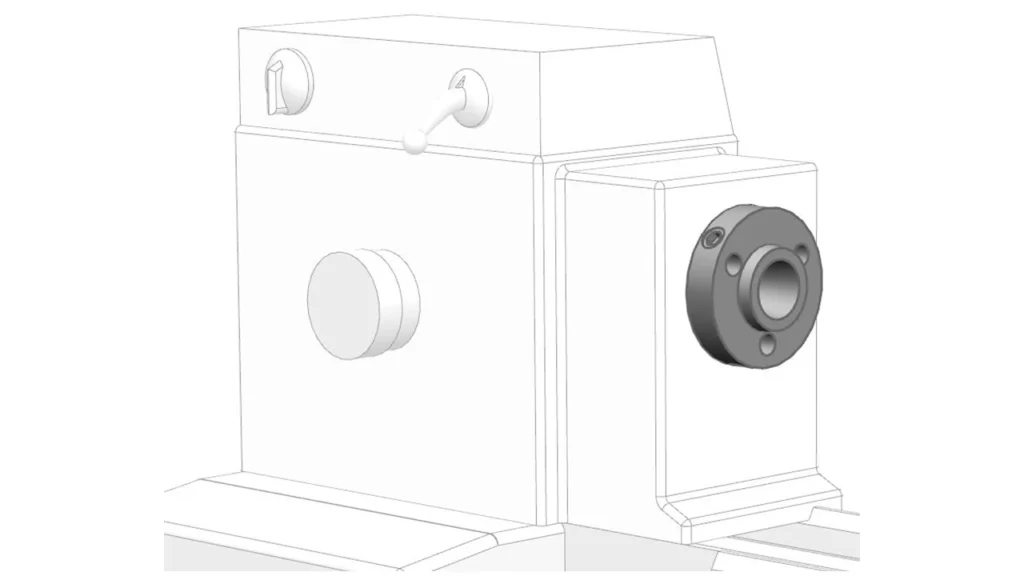
Chuck
The chuck is a workholding device mounted on the spindle nose. It grips the workpiece firmly, while the spindle drives the rotation. There are different types of chucks, such as three-jaw self-centering chucks (ideal for round stock) and four-jaw independent chucks (better for irregular shapes). Proper chuck selection and setup directly influence machining precision, safety, and efficiency.
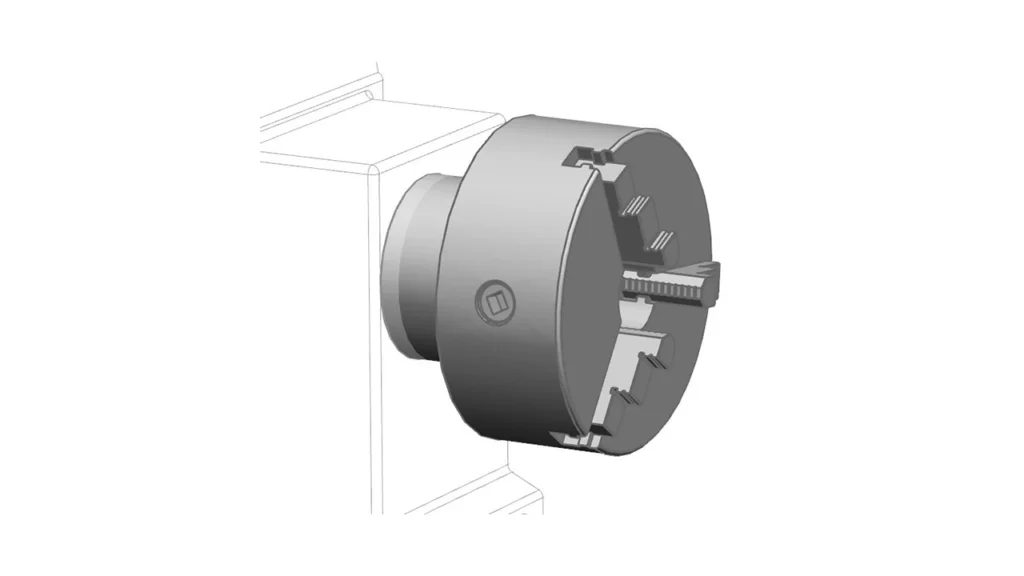
Guideways
Guideways are the precision tracks along the lathe bed that guide the carriage and tailstock in smooth, linear motion. There are two common types: flat ways and linear rails. Flat ways offer greater contact area and rigidity, suitable for heavy-duty turning, while linear rails reduce friction and allow for faster, more accurate positioning in high-speed CNC lathes. The quality of the guideways directly affects machining accuracy, repeatability, and long-term stability.
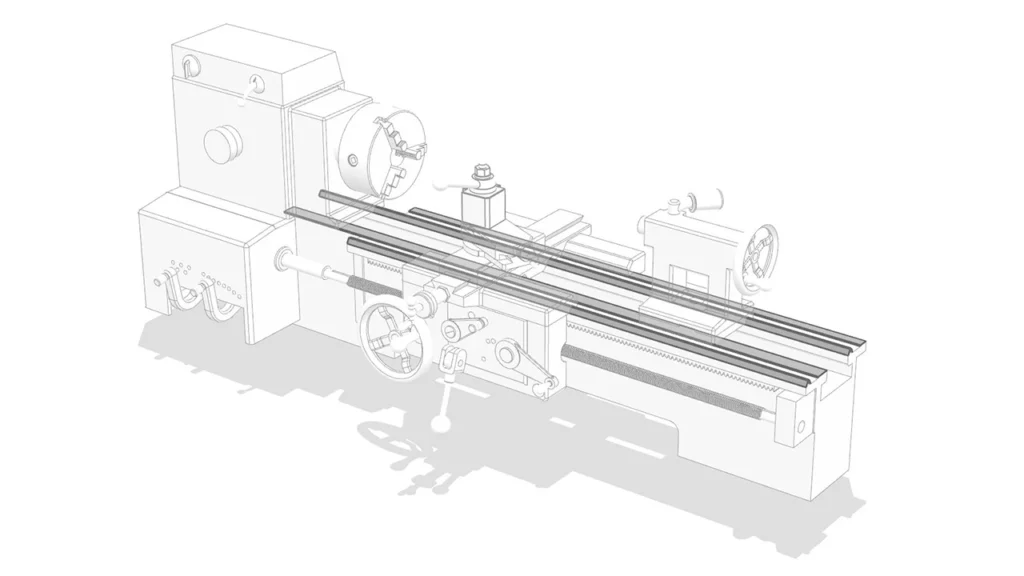
Leadscrew and Feed Rod
The leadscrew and feed rod are responsible for converting rotary motion into precise linear tool movement. The leadscrew drives the carriage for threading operations, while the feed rod handles routine feed motion. In CNC lathes, these functions are replaced by high-precision ball screws and servo-driven systems. Proper alignment and maintenance of these components are critical for achieving consistent thread profiles and reliable automated feeds.
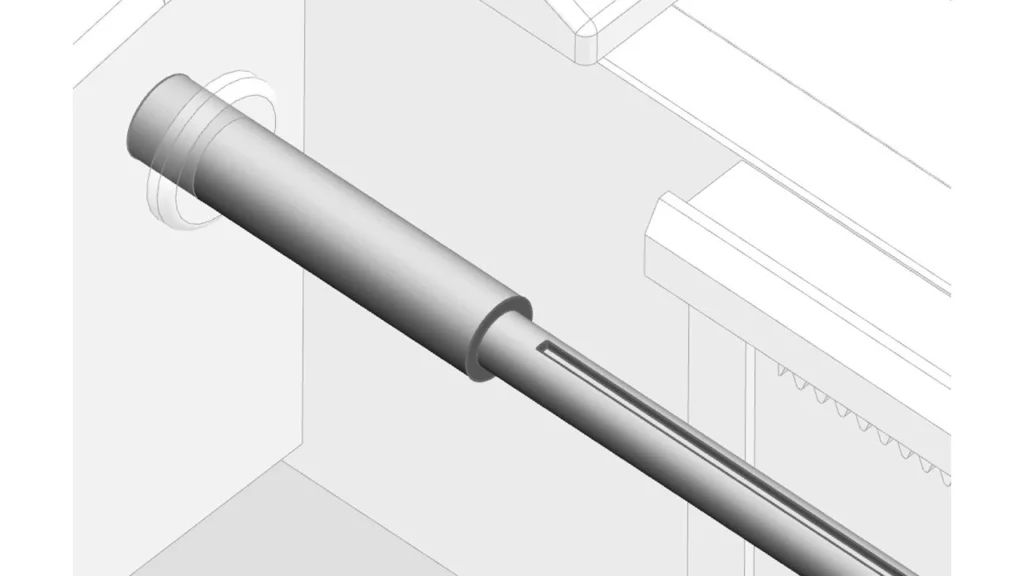
Tool Post
The tool post is the mounting platform for the cutting tool. It allows the operator to quickly position, align, and secure different tools. In manual lathes, the tool post is typically turret-style or four-way type, enabling fast tool changes. In CNC lathes, the tool post is replaced by a programmable tool turret, which can hold multiple tools and rotate automatically during machining.
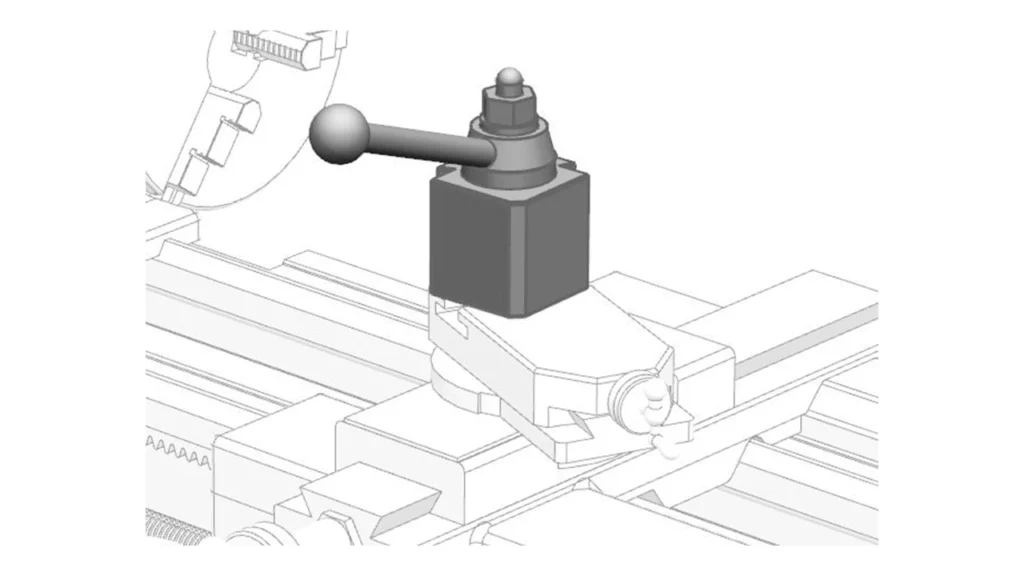
Carriage
The carriage moves the tool along the bed of the lathe and supports both longitudinal (Z-axis) and cross (X-axis) movement. It includes the cross-slide, compound rest, and apron. The apron contains feed mechanisms and clutch systems that control the motion of the carriage, especially in manual operations. On CNC machines, the carriage movement is precisely driven by servo motors along precision linear guides or hardened slideways, depending on machine design.
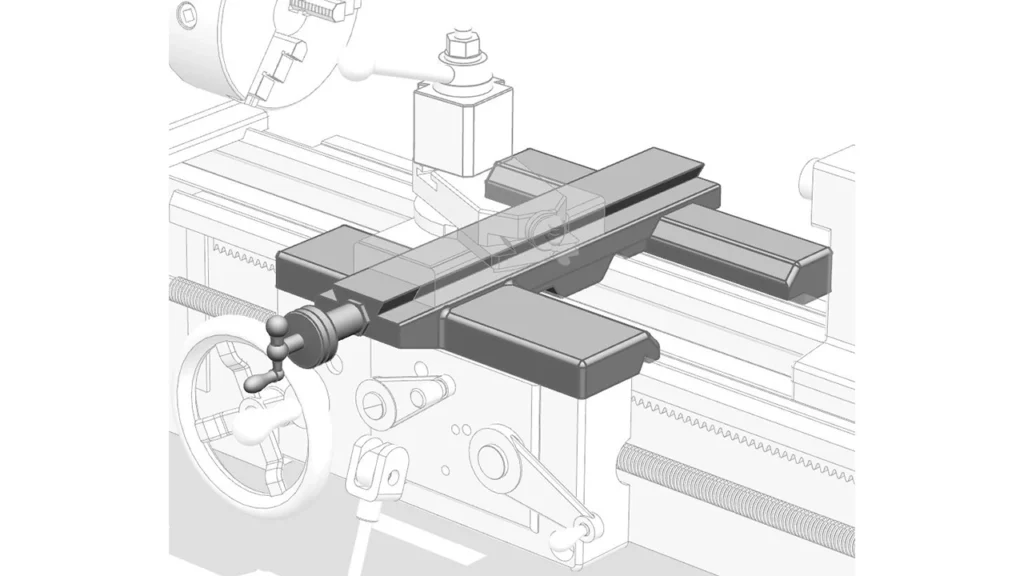
Tailstock
The tailstock is positioned opposite the headstock on the lathe bed. It provides additional support for long or flexible workpieces by holding a center that aligns with the spindle. This support helps prevent deflection, chatter, or bending during turning. It can also be fitted with drilling, tapping, or reaming tools for operations along the spindle axis. On CNC lathes, tailstocks may be hydraulic and automatically position themselves.
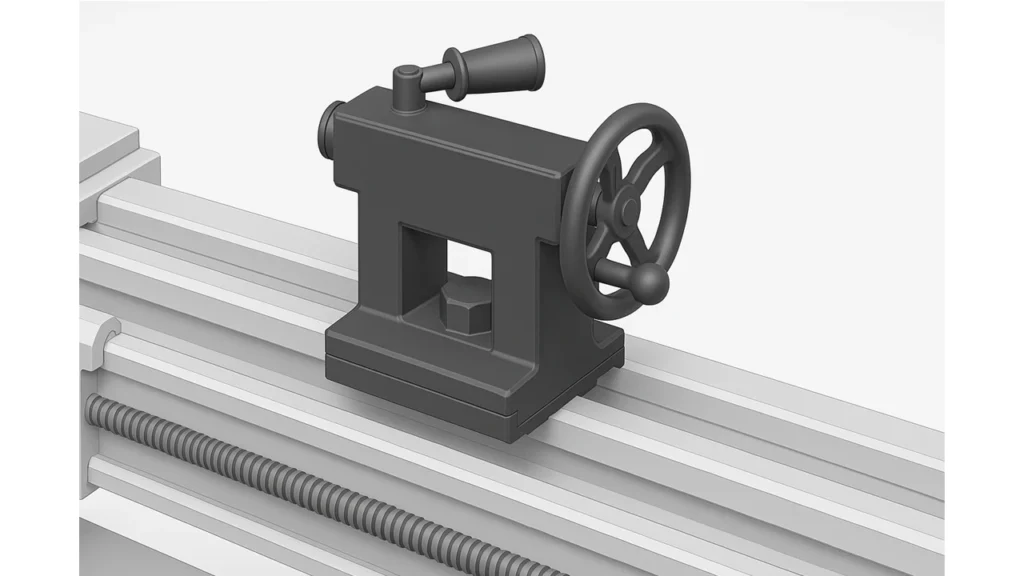
Common Types of Metal Lathes
Metal lathes come in a variety of configurations, each tailored to specific production needs, workpiece sizes, and levels of automation. Understanding the main types helps users choose the right tool for the job, whether it’s manual training or high-volume industrial machining. Below are the most widely used categories found in workshops and factories today.
Manual Lathe (Engine Lathe)
Manual lathes, also called engine lathes, are the traditional, hand-operated machines commonly seen in educational workshops, repair stations, and prototype environments. They require the operator to manually adjust spindle speed, tool position, and feed rate during machining. This hands-on interaction provides a valuable foundation for understanding how a metal lathe works.
Engine lathes typically include basic components such as a headstock, tailstock, tool post, carriage, and chuck. Operators use handwheels and levers to control the cutting process, allowing for a wide range of turning operations like facing, threading, and boring. Although slower and more labor-intensive, manual lathes are praised for their flexibility and teaching value. They’re ideal for low-volume jobs, machine maintenance, or learning the fundamentals of metal lathe operation.
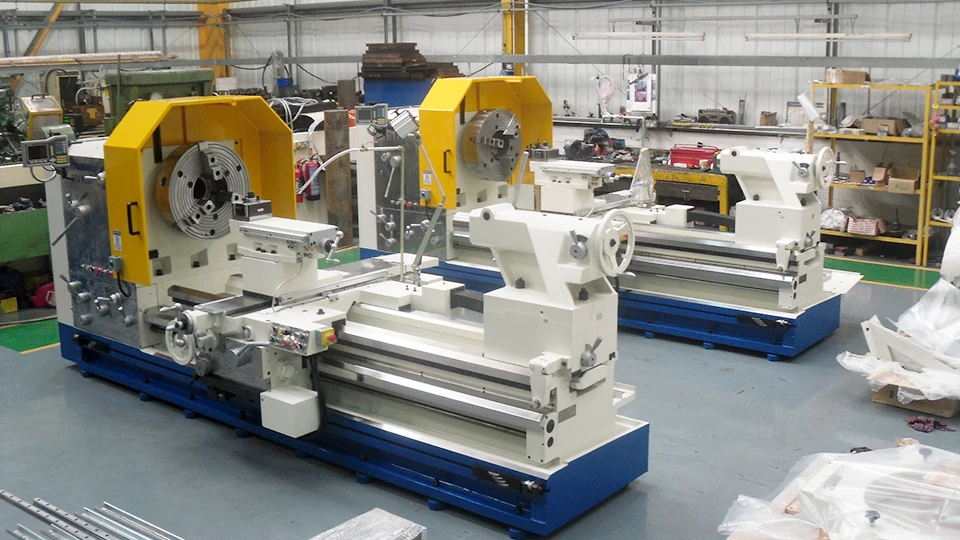
CNC Lathe
CNC (Computer Numerical Control) lathes automate the machining process using programmed instructions—often written in G-code. These machines are capable of producing highly accurate and consistent parts with minimal human intervention. A CNC lathe reads digital input from a computer, automatically controlling spindle speed, feed rate, tool path, and depth of cut.
One of the main advantages of CNC lathes is their suitability for mass production and precision machining. Industries like aerospace, automotive, and medical manufacturing rely heavily on CNC lathes to produce complex, high-tolerance components. Tool turrets, automatic chip removal systems, and live tooling further enhance their versatility. Because the machine does the heavy lifting, operators focus more on setup, measurement, and quality control rather than manual adjustments.
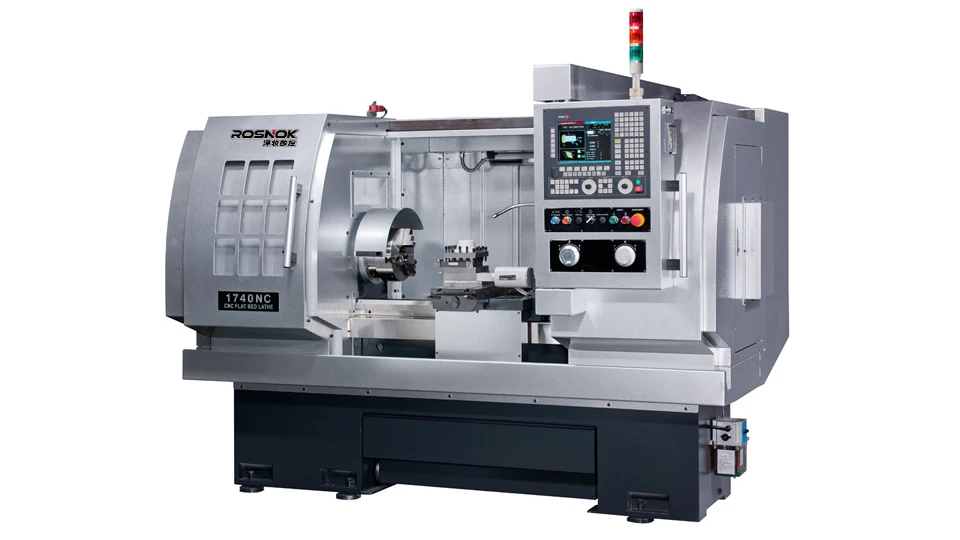
Swiss-Type Lathe
Swiss-type lathes are precision machines designed to produce small, slender, and complex parts with extreme accuracy. Unlike conventional lathes, the workpiece in a Swiss-type machine is held by a collet and slides through a guide bushing near the cutting tool. This minimizes deflection and vibration, especially for long, narrow components.
These machines often feature multiple axes and can simultaneously operate several tools at once, making them ideal for high-volume production. Industries such as medical device manufacturing, electronics, and watchmaking rely on Swiss lathes for their ability to hold tight tolerances on miniature components. Their compact design, fast cycle times, and multi-tasking capabilities make them essential in any precision machining environment.
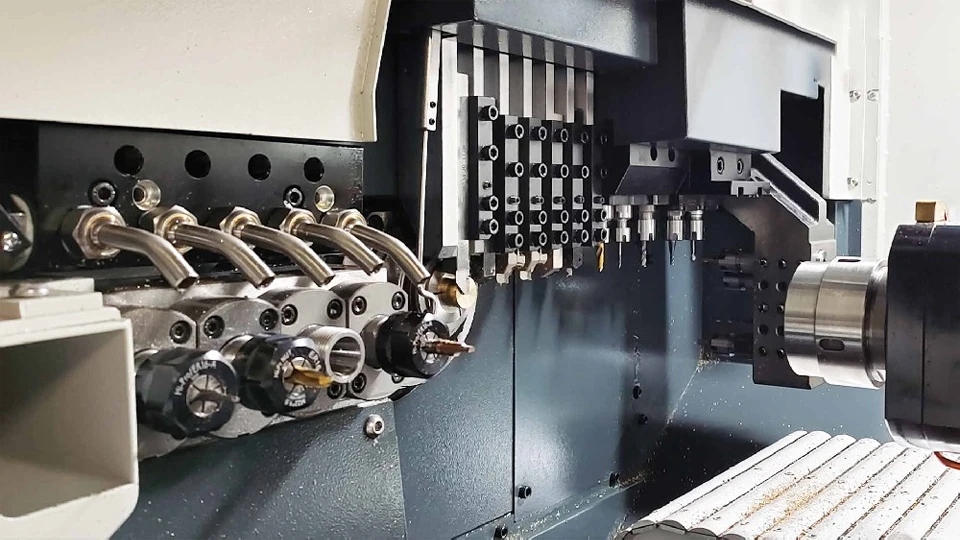
Pipe Threading Lathe
Pipe threading lathes are specialized machines used for cutting threads on large-diameter pipes. They are equipped with robust structures like dual chucks for clamping long workpieces and large-bore spindles to accommodate oversized stock. These features make them particularly effective for heavy-duty turning and threading operations in the oil and gas sector.
The lathe’s headstock and feed system are optimized for handling the torque and stress of threading large, thick-walled pipes. In addition to standard threading tools, these machines may include automatic threading cycles and quick-change gearboxes for different thread types. Their rugged build ensures reliable performance even under continuous industrial workloads.
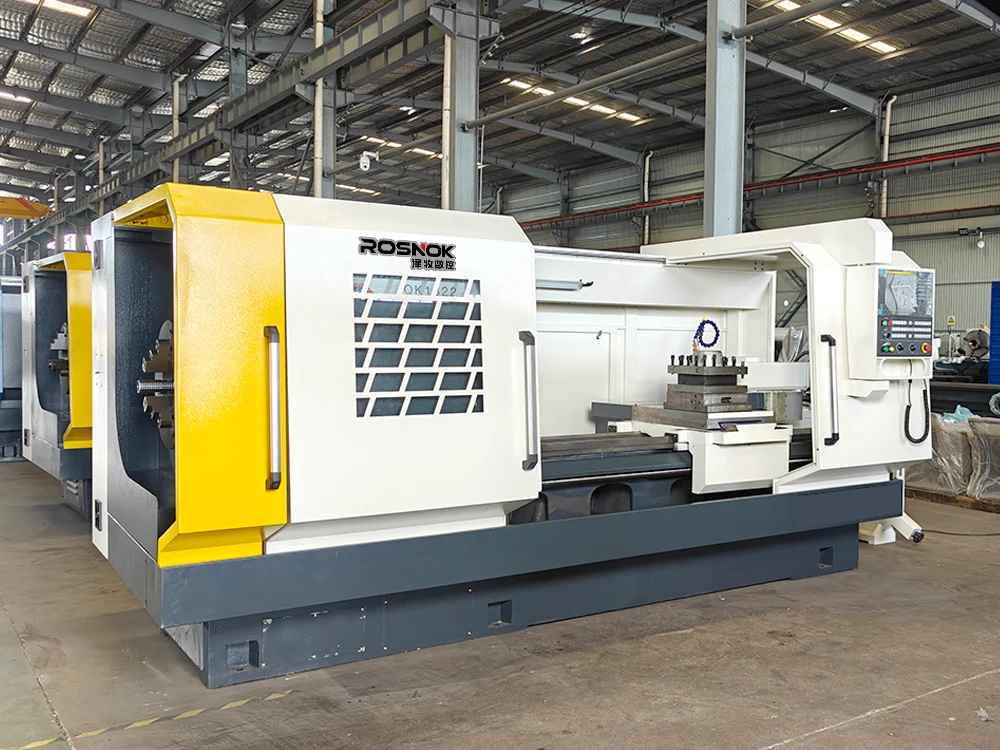
Vertical Lathe
A vertical lathe, or vertical turning lathe (VTL), is configured with the spindle oriented vertically instead of horizontally. This layout is ideal for handling large, heavy, and wide workpieces such as gear blanks, turbine casings, or windmill hubs. The workpiece sits on a rotating table, and the cutting tools move vertically and radially to shape the material.
The vertical design reduces gravitational deflection of the workpiece and improves stability during machining. Vertical lathes are commonly used in the shipbuilding, power generation, and heavy equipment industries. Their large footprint and high load capacity make them indispensable for machining components that would be impractical on standard horizontal lathes.
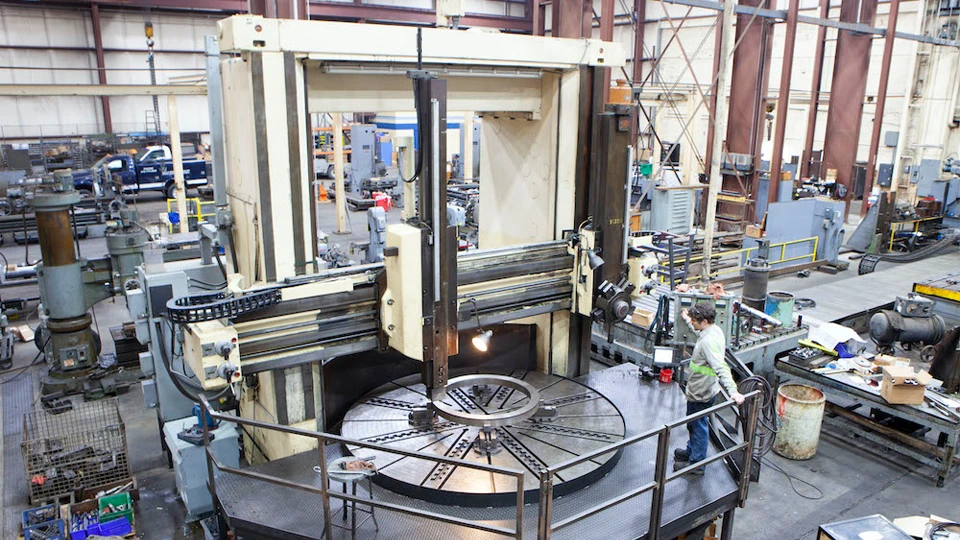
CNC Turning Center
A CNC Turning Center is an advanced evolution of the standard CNC lathe, designed for higher productivity, automation, and multi-tasking. Unlike basic CNC lathes that focus on single-axis turning, turning centers often include Y-axis milling, drilling, and live tooling capabilities, enabling complete part machining in a single setup.
What sets it apart is its exceptionally high machining accuracy. This is achieved through a more rigid machine structure, superior spindle systems, high-resolution encoders, and thermal compensation features. These enhancements reduce vibration, ensure precise positioning, and maintain dimensional stability—even under continuous operation.
CNC Turning Centers are widely used in industries requiring tight tolerances and complex geometries, such as aerospace, medical devices, and precision engineering. Their ability to complete multiple processes in one cycle also minimizes setup time and eliminates the risk of repositioning errors.
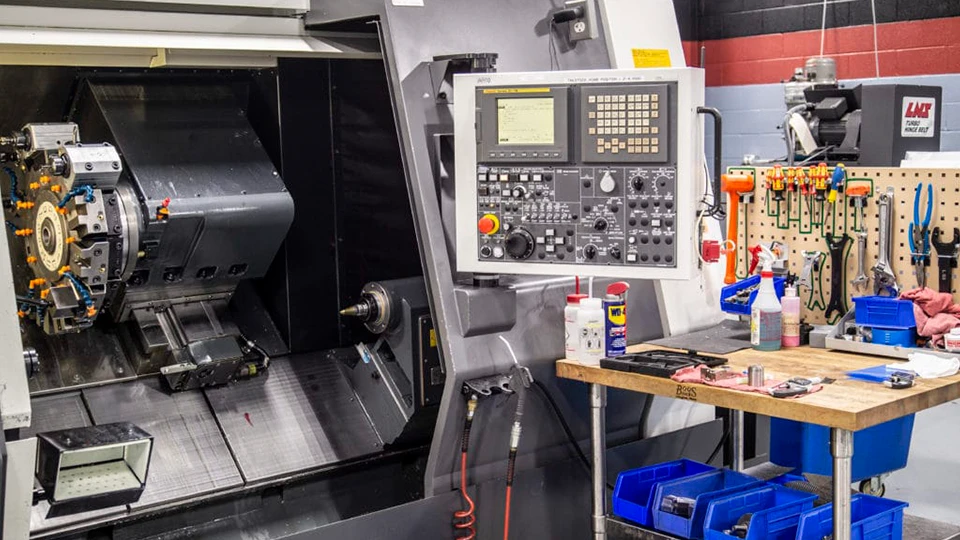
Applications of Metal Lathes
Metal lathes are foundational tools in modern manufacturing, with applications that span from high-volume industrial sectors to individual creators. Whether you’re machining large turbine shafts or tiny surgical screws, these machines offer the control, precision, and repeatability required for complex part fabrication. Below are the major industries where metal lathes play a critical role.
Automotive and Aerospace
In both the automotive and aerospace sectors, metal lathes are essential for producing rotating and load-bearing components. These include engine shafts, pistons, landing gear axles, turbine rotors, and various structural housings. What makes a metal lathe indispensable in these industries is its ability to maintain tight dimensional tolerances over long runs—critical for ensuring mechanical balance and performance under stress. CNC lathes and turning centers are particularly favored for their high repeatability, which is vital for mass production of identical parts with no deviation.
Oil & Gas / Energy Equipment
Large-scale energy infrastructure demands robust and precision-machined components. Metal lathes are often used to manufacture high-strength elements such as valve bodies, thick-walled flanges, connectors, and pipe couplings. For oil and gas applications, pipe threading lathes are commonly employed to cut tapered threads on large-diameter pipes, which are essential for safe and pressure-tight connections. The metal lathe’s ability to handle heavy parts while maintaining axial alignment and thread accuracy is critical for safety and longevity in harsh environments.
Medical and Precision Instruments
In the medical field, the demand for micro-level accuracy and smooth finishes is non-negotiable. Metal lathes—especially Swiss-type and CNC variants—are used to craft orthopedic implants, dental abutments, surgical screws, and diagnostic instrument housings. These parts are typically made from materials like titanium, stainless steel, or cobalt-chrome alloys, requiring exceptional tool control and chip management. A well-calibrated lathe ensures clean surface finishes that meet both functional and biocompatibility standards.
Custom Parts and Hobby Machining
Outside of large-scale industry, metal lathes are popular among hobbyists, makers, and custom part fabricators. Whether it’s for building prototypes, restoring vintage equipment, or crafting one-off parts for motorcycles and bicycles, the versatility of a manual or benchtop lathe is unmatched. These machines allow individuals to turn their creative ideas into tangible metal components without needing a factory-scale setup. The ability to create threads, bores, or precision diameters makes a metal lathe an essential tool for any personal workshop.
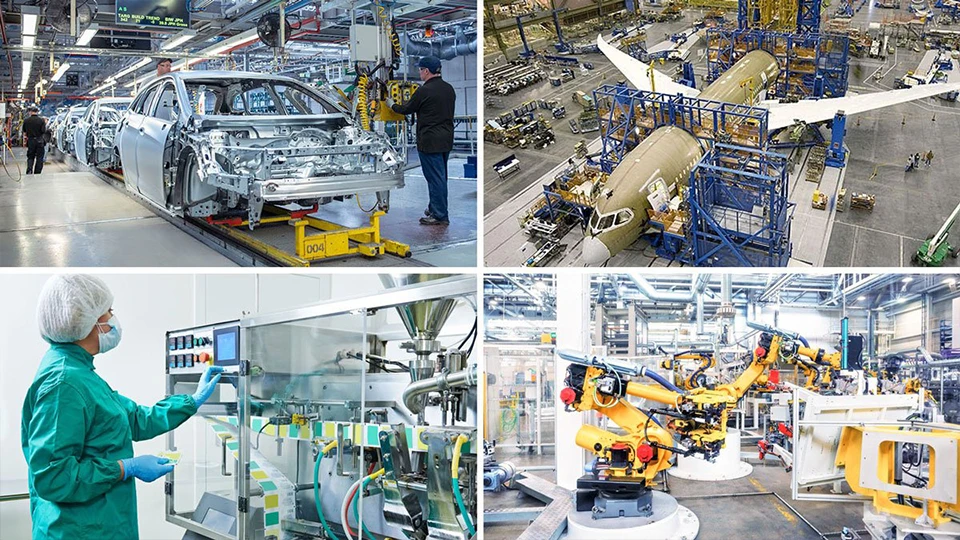
How to Maintain a Metal Lathe
Proper maintenance isn’t just about keeping the machine clean—it’s essential for preserving machining accuracy, extending machine life, and avoiding costly downtime. Whether you’re using a manual or CNC model, every metal lathe requires consistent care to stay in top condition. This section outlines practical routines and tips that any operator can implement to maintain their lathe effectively and safely.
Daily Maintenance Checklist
A metal lathe should be inspected and lightly serviced before and after each use. Here’s a quick but essential daily checklist:
- Clean the machine surface: Wipe off chips, coolant, and oil residue from the bed, carriage, and tool post.
- Lubricate sliding parts: Apply light oil to the carriage ways, cross-slide, and tailstock if not automatically lubricated.
- Check chuck tightness: Ensure the chuck jaws are clean and firmly gripping the workpiece. Loose or dirty jaws can lead to slippage or runout.
- Inspect belts and drive systems: Listen for abnormal vibrations or squeaks. Tensioned V-belts or servo couplings should be checked for wear.
- Test emergency stop and limit switches: Confirm that safety systems are responsive before operating.
- Remove chips from lead screw and ways: Chip buildup causes backlash and wear. Use a brush or air gun for cleanup.
Forming these habits prevents contamination, friction wear, and accidental damage—all of which can reduce precision and machine lifespan.
Lubrication Points and Schedules
Neglecting lubrication is one of the most common causes of wear and loss of accuracy in lathes. Every machine has designated points that require consistent oiling or greasing.
Key lubrication zones include:
- Headstock gearbox: Usually uses splash oil lubrication; change oil per manufacturer schedule.
- Main spindle bearings: Some spindles require grease, others oil mist. Over-lubrication can be just as harmful as under-lubrication.
- Leadscrews and ball screws: Require frequent oiling to reduce thread wear and maintain smooth feed motion.
- Guideways and linear rails: Apply way oil (e.g., ISO 68 or ISO 220) daily or via auto-lube system.
- Tailstock quill and center: Light oiling prevents rust and seizing.
Follow your lathe’s manual closely. If you’re unsure, a standard practice is weekly lubrication for manual lathes and daily for CNC machines, especially in high-duty shops.
Remember: no lubrication = no precision.
Avoiding Common Wear and Damage
Even a well-designed lathe can degrade quickly if mishandled. Many issues stem from operator errors or negligence rather than mechanical flaws.
Watch out for these common mistakes:
- Running dry: Operating without lubrication causes frictional heat, galling, and premature failure of bearings and screws.
- Forgetting chip removal: Chips between guideways or on rotating parts can cause pitting and scoring.
- Overloading the spindle: Using a lathe beyond its rated capacity—especially on heavy workpieces—leads to premature wear.
- Tool chatter and loose tool posts: These indicate improper setup. Re-tighten all components and reduce cutting depth or speed if needed.
- Ignoring unusual noises: Knocking, squealing, or vibration can be early warnings of internal misalignment or worn parts.
Preventive actions include regular calibration, torque checks, and operator training. A simple maintenance log can help track tasks and identify recurring issues before they escalate.
Why Every Machinist Should Understand the Lathe
Understanding the metal lathe is more than learning how to operate a single machine—it’s about mastering a foundational skill in the world of manufacturing. The principles you learn on a lathe—tool positioning, cutting dynamics, material behavior, precision measurement—are transferable across nearly every other machining process. Whether you’re working in a high-volume CNC shop or developing prototypes by hand, the core thinking behind metal lathes sharpens your understanding of form, fit, and function.
For machinists, the lathe is often the first real encounter with transforming raw metal into usable components. It teaches spatial awareness, steady control, and disciplined planning. Many complex machining systems, including CNC milling and grinding, still rely on concepts first understood through lathe work. Employers often look for machinists with solid lathe experience because it reflects a deep grasp of manual skill, mechanical intuition, and process reliability.
If you’re building a long-term career in machining, metalworking, or mechanical design, mastering the lathe isn’t optional—it’s essential. It shapes not only your parts, but also your problem-solving ability, efficiency, and mindset as a maker.
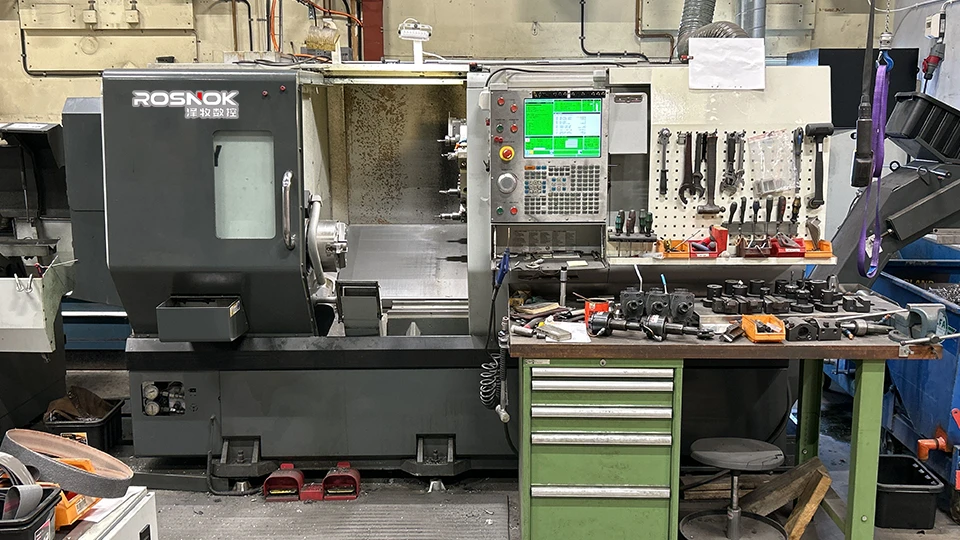
Conclusion
A metal lathe isn’t just a tool—it’s the foundation of nearly every machined part in modern industry. From simple turning to complex threading and internal boring, it enables controlled, repeatable, and high-precision operations across materials and sectors. In this guide, you’ve gained a structured understanding of how lathes work, what they’re made of, which types fit which tasks, and how to keep them performing at their best. Mastering this knowledge isn’t optional—it’s a baseline for anyone serious about machining.
As precision, speed, and automation become the standard in today’s manufacturing world, the importance of choosing the right metal lathe has never been greater—whether you’re upgrading outdated equipment or setting up a new production line. Having a clear understanding of your production needs and how different lathes support them allows for smarter, more future-proof investments.
At Rosnok, we manufacture high-precision metal lathes designed to support real-world machining demands. From traditional manual models to advanced CNC turning centers, our solutions are trusted by industries that value stability, accuracy, and long-term performance. If you’re planning your next investment or exploring which lathe best suits your production goals, Rosnok is ready to support you with expert guidance and proven machine reliability.
